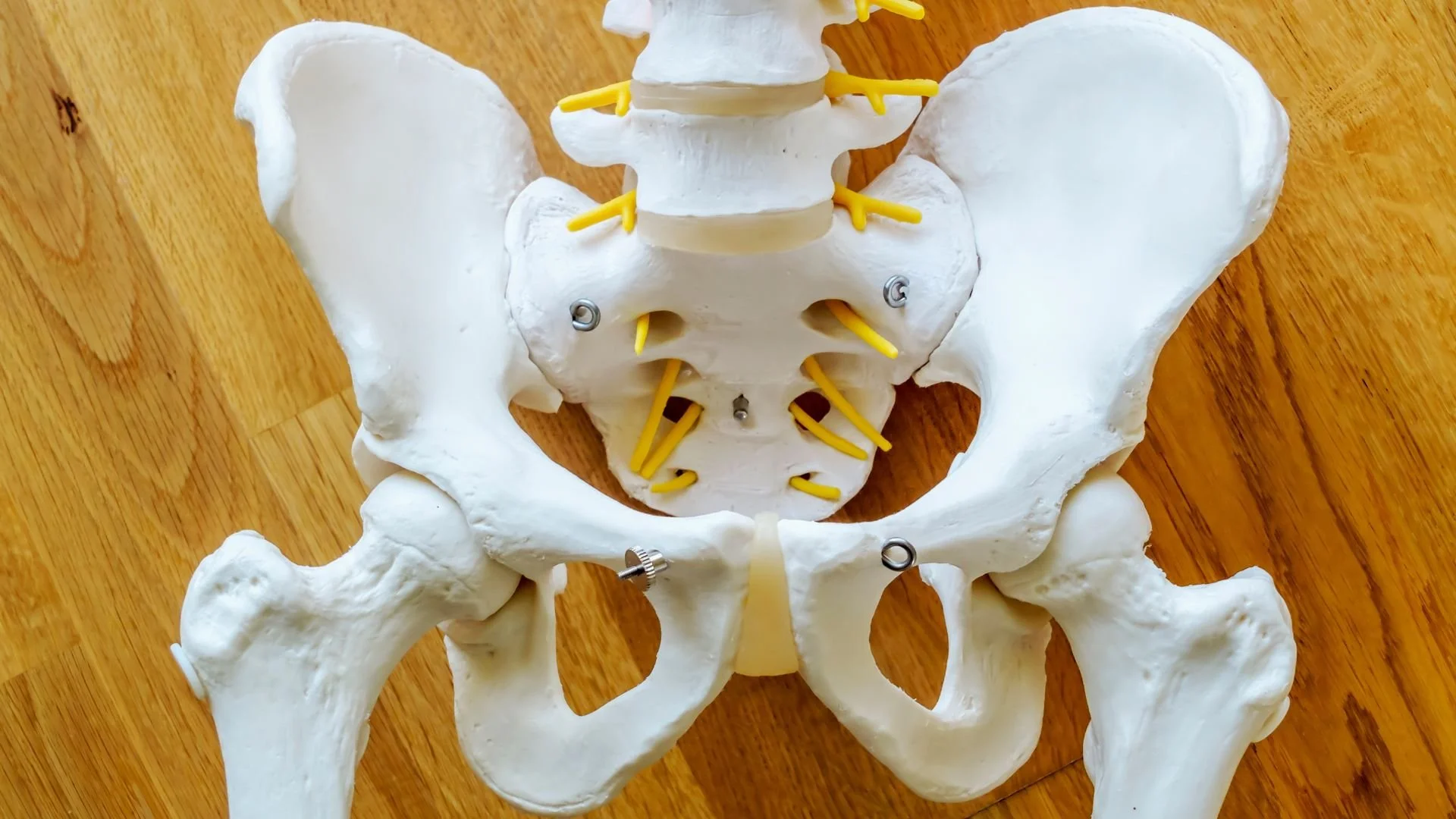Strong Foundations: The Critical Connection Between Bone Health and Pelvic Function
Osteoporosis – a condition characterized by decreased bone density and increased fracture risk – affects approximately one in three women over age 50. While public health messages appropriately emphasize this condition's impact on hip, spine, and wrist fractures, fewer discussions address how bone health influences pelvic floor function. The skeletal foundation supporting your pelvic floor plays crucial roles in maintaining optimal function throughout life, creating important connections between bone density strategies and pelvic health outcomes.
Your pelvic floor muscles attach directly to your bony pelvis, primarily connecting to the pubic bone anteriorly and the coccyx (tailbone) posteriorly, with additional attachments along the pelvic sidewalls. These attachment points provide the stable foundation allowing these muscles to generate appropriate tension and support. When osteoporosis affects the pelvis – particularly the pubic symphysis or sacrum – subtle changes in bone architecture can alter optimal muscle function. More significantly, developing a compressed vertebral fracture changes your posture and spinal alignment, potentially creating compensation patterns that place excessive pressure on your pelvic floor and abdominal wall.
Risk assessment for both osteoporosis and pelvic floor dysfunction reveals significant overlap in contributing factors. Hormonal changes during perimenopause and menopause affect both bone density and pelvic tissue quality. Nutritional factors influencing bone health – particularly calcium, vitamin D, magnesium, and protein intake – similarly support optimal muscle and connective tissue function throughout your pelvis. Activity patterns represent another shared influence, as both systems benefit from appropriate loading that stimulates tissue adaptation while avoiding excessive forces that might damage vulnerable structures. This overlap suggests that comprehensive approaches addressing both concerns simultaneously offer synergistic benefits.
Exercise selection requires thoughtful consideration when addressing both bone health and pelvic floor function. Weight-bearing activities provide crucial mechanical loading that stimulates bone remodeling, while resistance training helps maintain muscle mass that correlates with bone density. However, high-impact activities beneficial for bone stimulation might create excessive stress for compromised pelvic floor muscles, particularly in women with existing dysfunction. The optimal approach involves individualized programming that addresses both concerns – typically including appropriate impact graduation, resistance training with proper pressure management, and specific pelvic floor coordination exercises. A qualified pelvic floor physiotherapist can help design programs addressing both goals simultaneously.
Fall prevention deserves special mention within this discussion, as falls represent the immediate precipitating event for most osteoporotic fractures. Interestingly, research demonstrates connections between pelvic floor function and balance performance – women with pelvic floor dysfunction often show subtle alterations in core stability and balance reactions that might increase fall risk. Additionally, urinary urgency and frequency (common pelvic floor symptoms) create situational risks when rushing to bathrooms, particularly at night. Comprehensive programs addressing both bone health and pelvic floor function help reduce these interconnected risks through improved strength, coordination, and symptom management.
Practical strategies for supporting both systems include calcium-rich diets (aiming for 1200mg daily through food sources when possible), vitamin D supplementation based on blood level testing (typically 1000-2000 IU daily), regular resistance training focusing on functional movement patterns, and appropriate impact activities based on individual assessment. Weight management also supports both systems by reducing excessive joint stress while providing natural resistance during daily activities. For women with significant risk factors or established osteoporosis, consultation with both physicians and pelvic health specialists helps create comprehensive programs addressing both bone density and pelvic floor function for optimal outcomes throughout the aging process.

